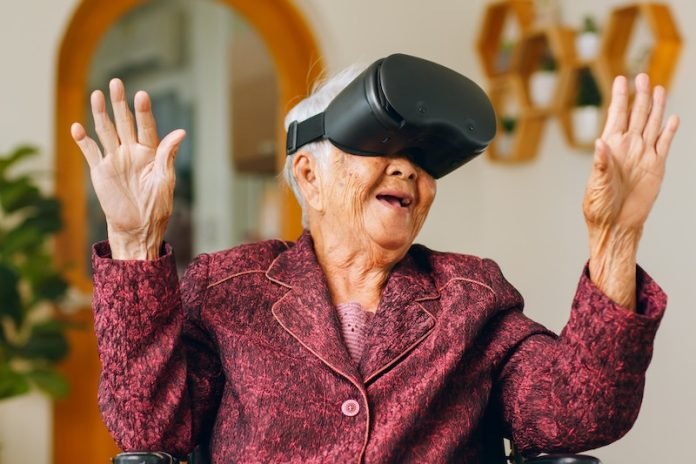
A groundbreaking clinical trial from the Cleveland Clinic suggests that augmented reality (AR) headsets could help improve posture and gait in individuals with Parkinson’s disease.
Published in the journal Neurorehabilitation and Neural Repair, the study focused on the use of Microsoft’s HoloLens2 in running a unique treatment known as “Dual-task augmented Reality Treatment” (DART).
How DART Works
DART aims to stimulate both the brain and body through a series of carefully designed activities. These activities counteract Parkinson’s impact on the brain areas that regulate mental and physical tasks.
This approach is known as dual-task training (DTT) and is beneficial for improving balance and stability.
However, conventional DTT isn’t widely employed, partly due to the challenges in personalizing programs and tracking patient progress.
To simplify the process, DART uses a digital avatar named Donna, inspired by Dr. Jay Alberts’s mother.
When patients put on the HoloLens2 AR headset, Donna appears in their field of view and guides them through various exercises, all while the headset keeps track of the patient’s movements and collects data for clinical review.
Why This Is Important
According to Dr. Alberts, the study’s first author, the DART program can perform tasks down to the minute detail, like detecting slight alterations in someone’s walking pattern.
This high level of precision can potentially standardize DTT, making it more accessible for Parkinson’s patients.
In the clinical trial, both groups—those trained through an in-person therapist and those using the DART platform—showed significant improvements in posture, stability, and gait.
The trial included nearly 50 participants and provided more than 230 different DTT activities.
Not a Replacement but an Augmentation
Although DART isn’t meant to replace the role of physical therapists, it serves as an enabling technology that can make DTT more widely available.
This comes as great news for patients juggling physical therapy, medications, and life commitments.
What’s Next?
The trial demonstrates that technology could play a vital role in making specialized treatments more accessible for people with Parkinson’s disease.
By integrating advanced AR headsets into the healthcare regimen, clinicians can offer a more standardized and data-driven approach to Parkinson’s care.
Takeaway
The DART system represents a promising step in using technology to improve the quality of life for Parkinson’s patients.
By using augmented reality and a well-designed set of activities, DART aims to make specialized Parkinson’s treatment more widely available, less cumbersome, and equally effective as traditional methods.
If you care about Parkinson’s disease, please read studies about Vitamin E that may help prevent Parkinson’s disease, and Vitamin D could benefit people with Parkinson’s disease.
For more information about brain health, please see recent studies about new way to treat Parkinson’s disease, and results showing COVID-19 may be linked to Parkinson’s disease.
The research findings can be found in Neurorehabilitation and Neural Repair.
Follow us on Twitter for more articles about this topic.
Copyright © 2023 Knowridge Science Report. All rights reserved.




